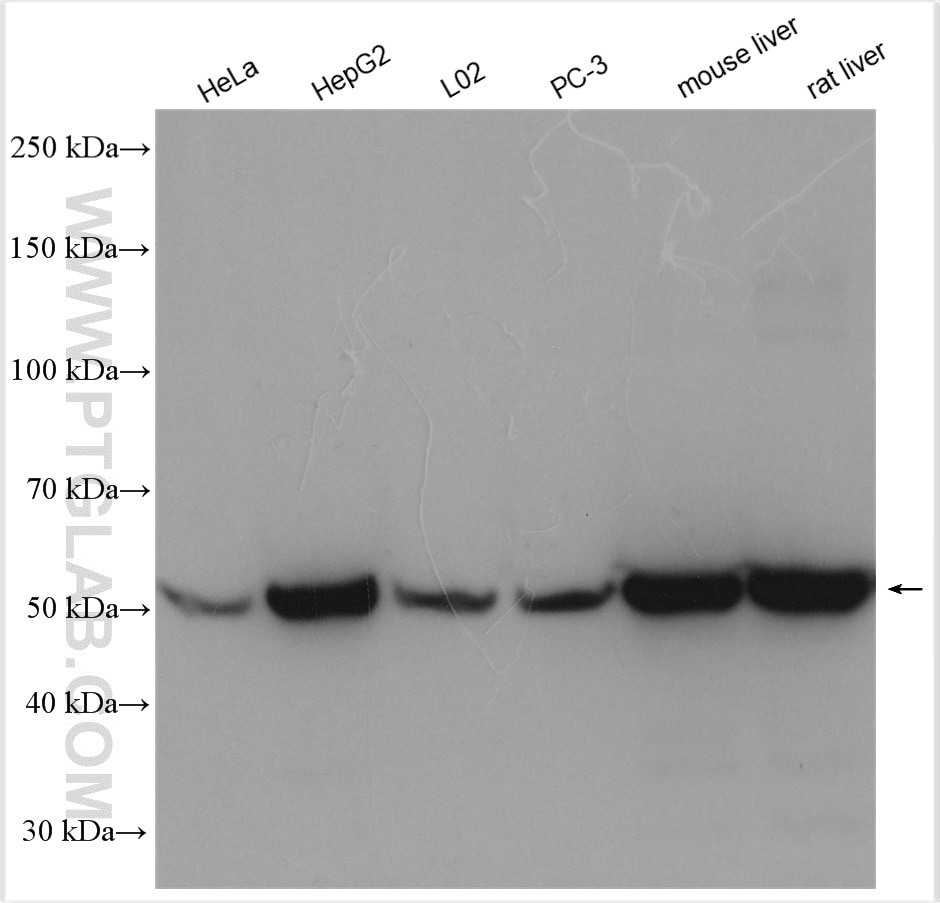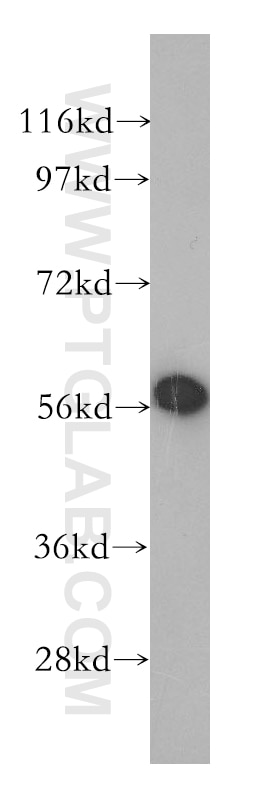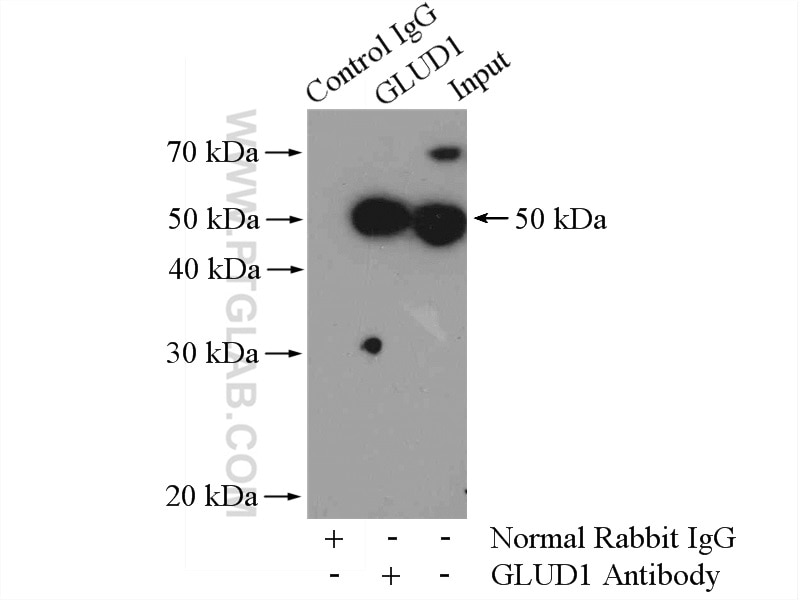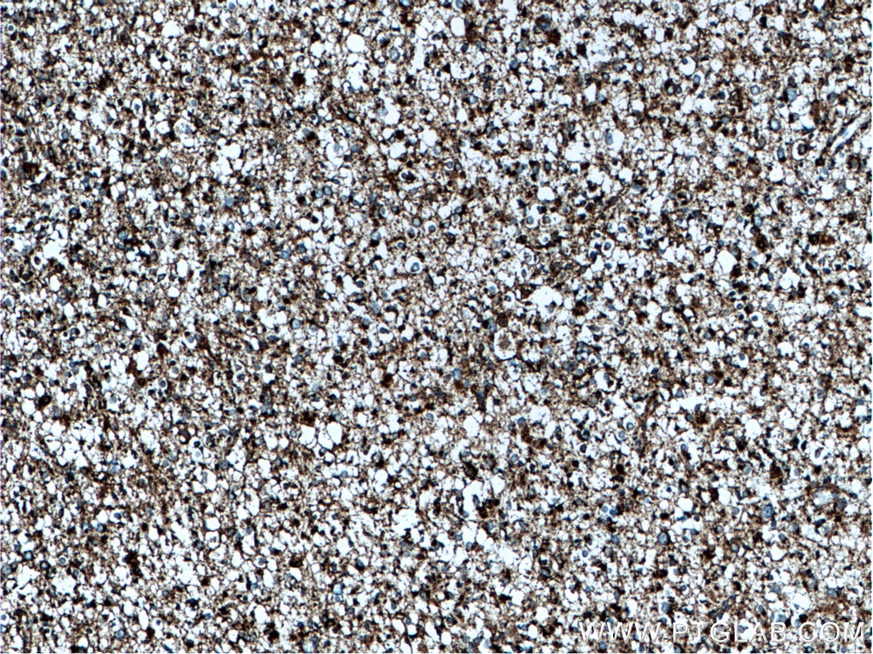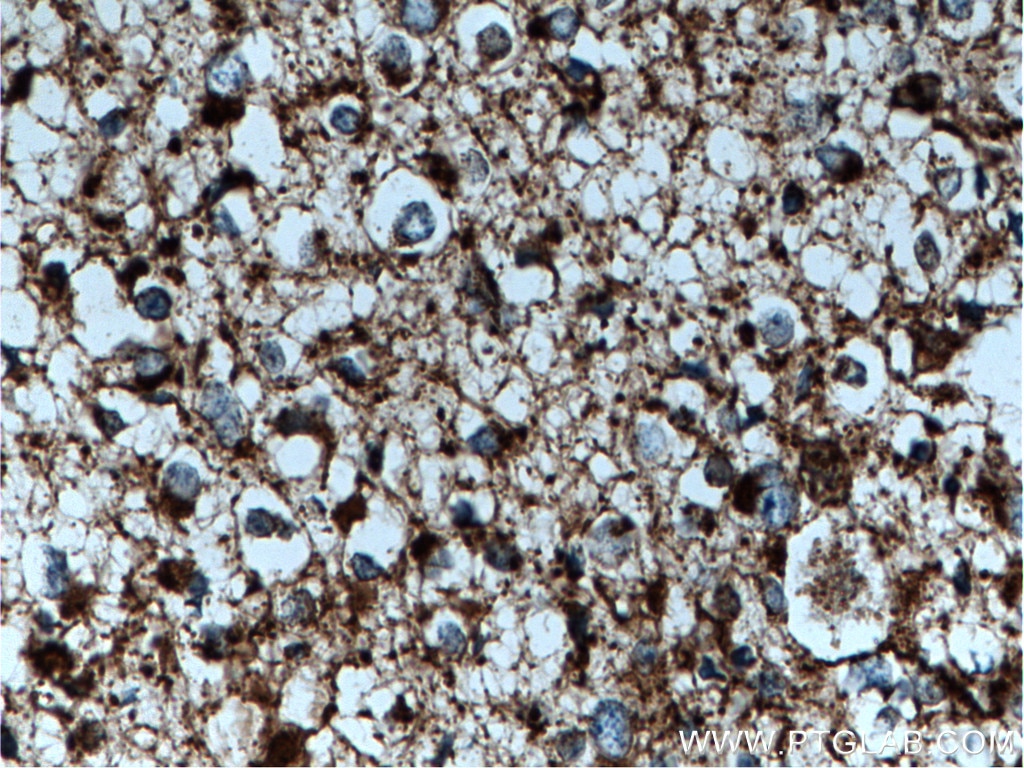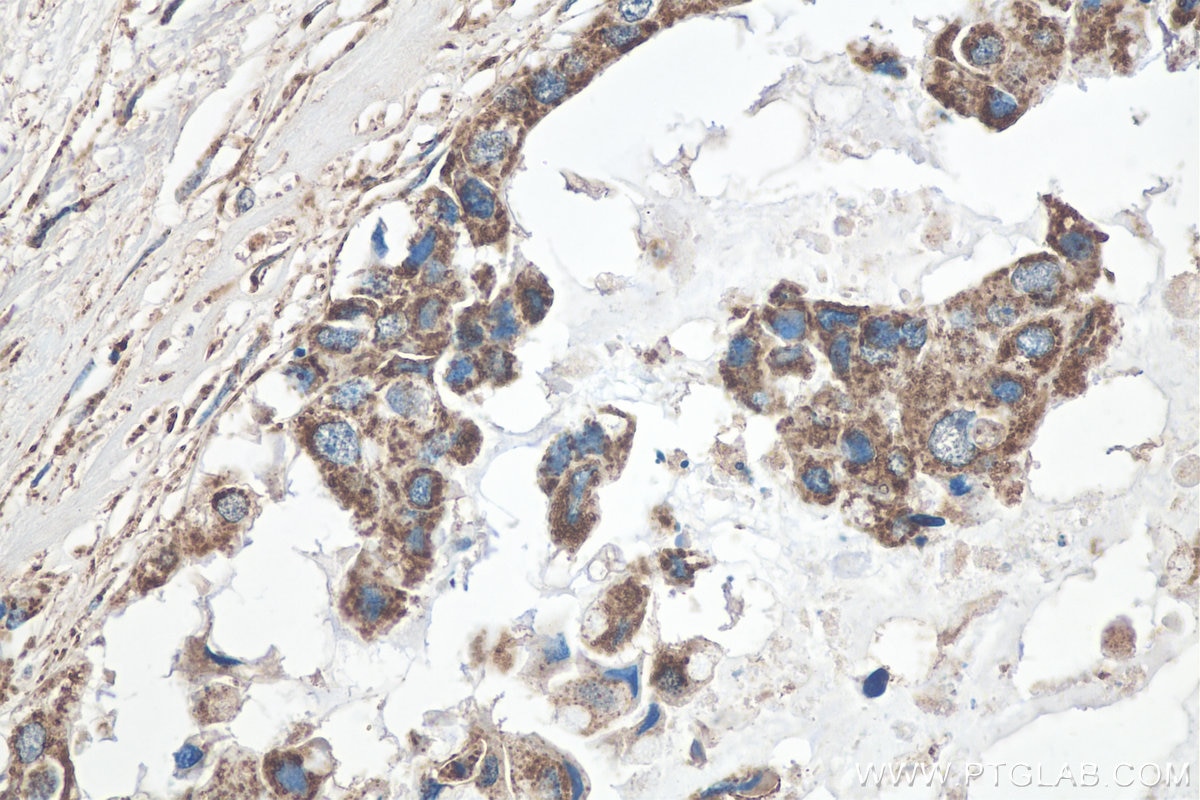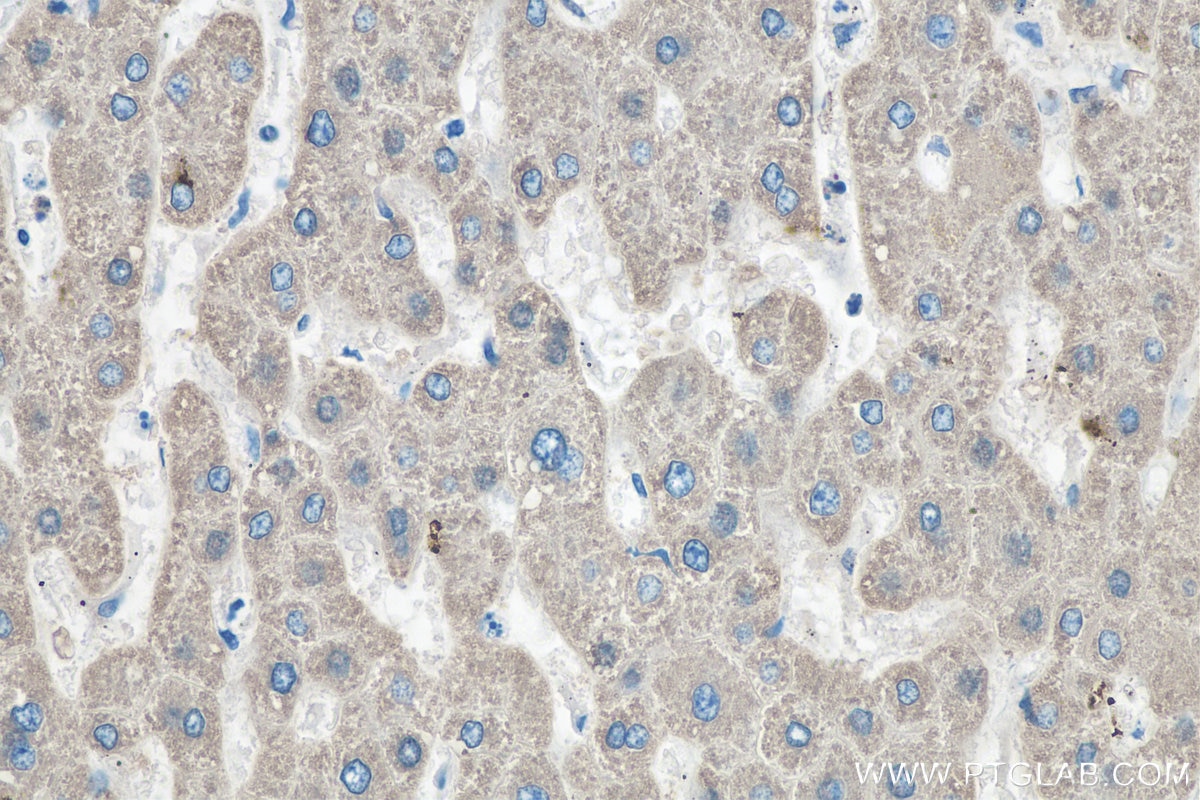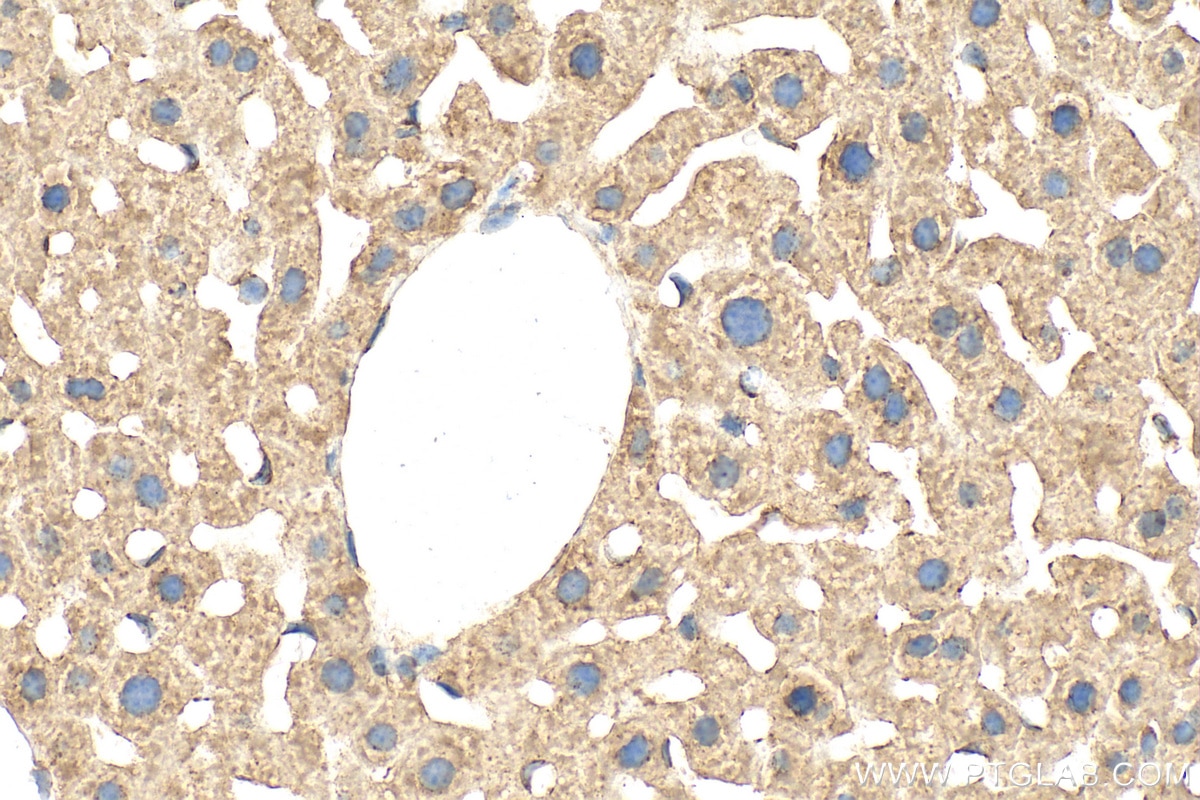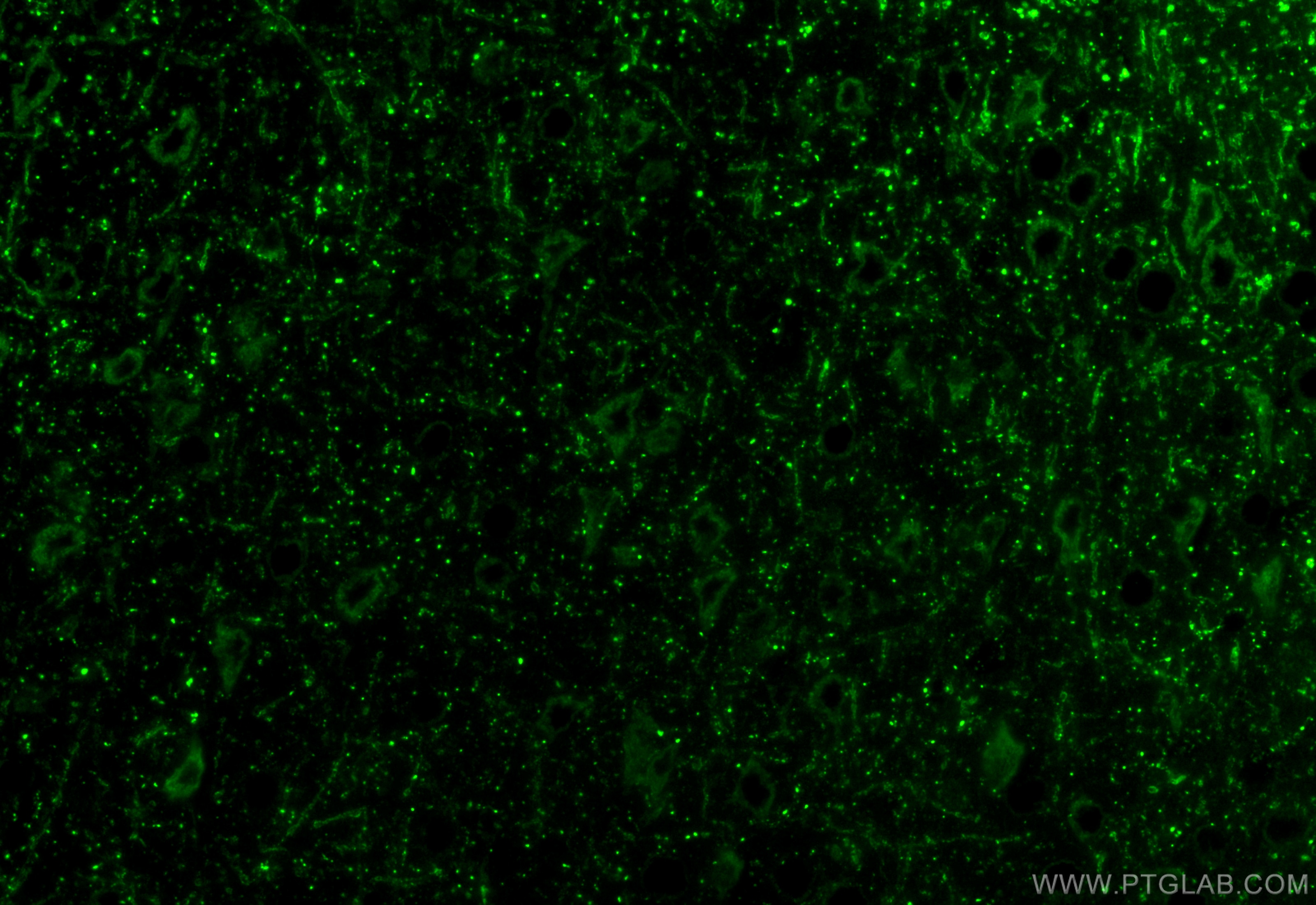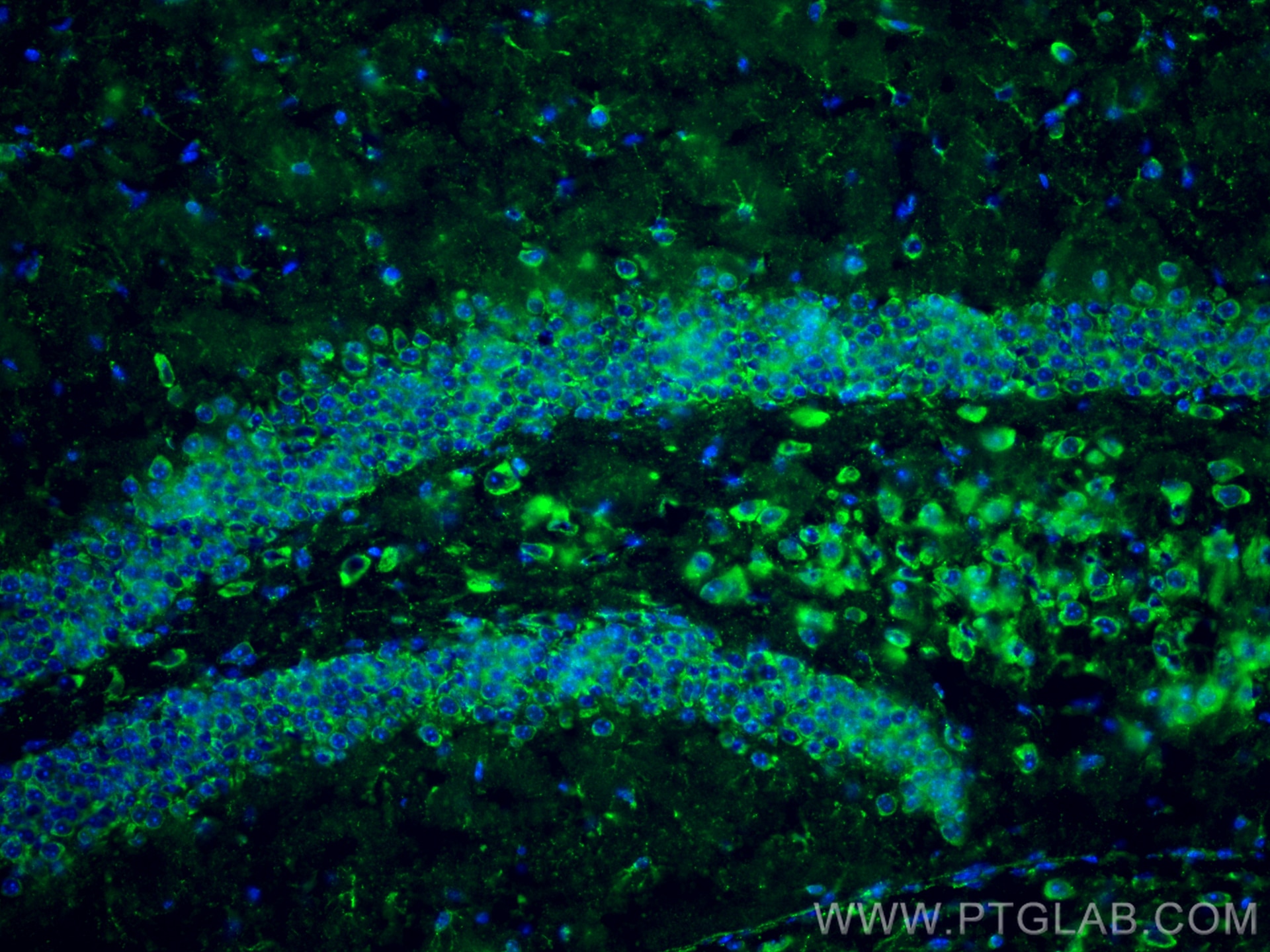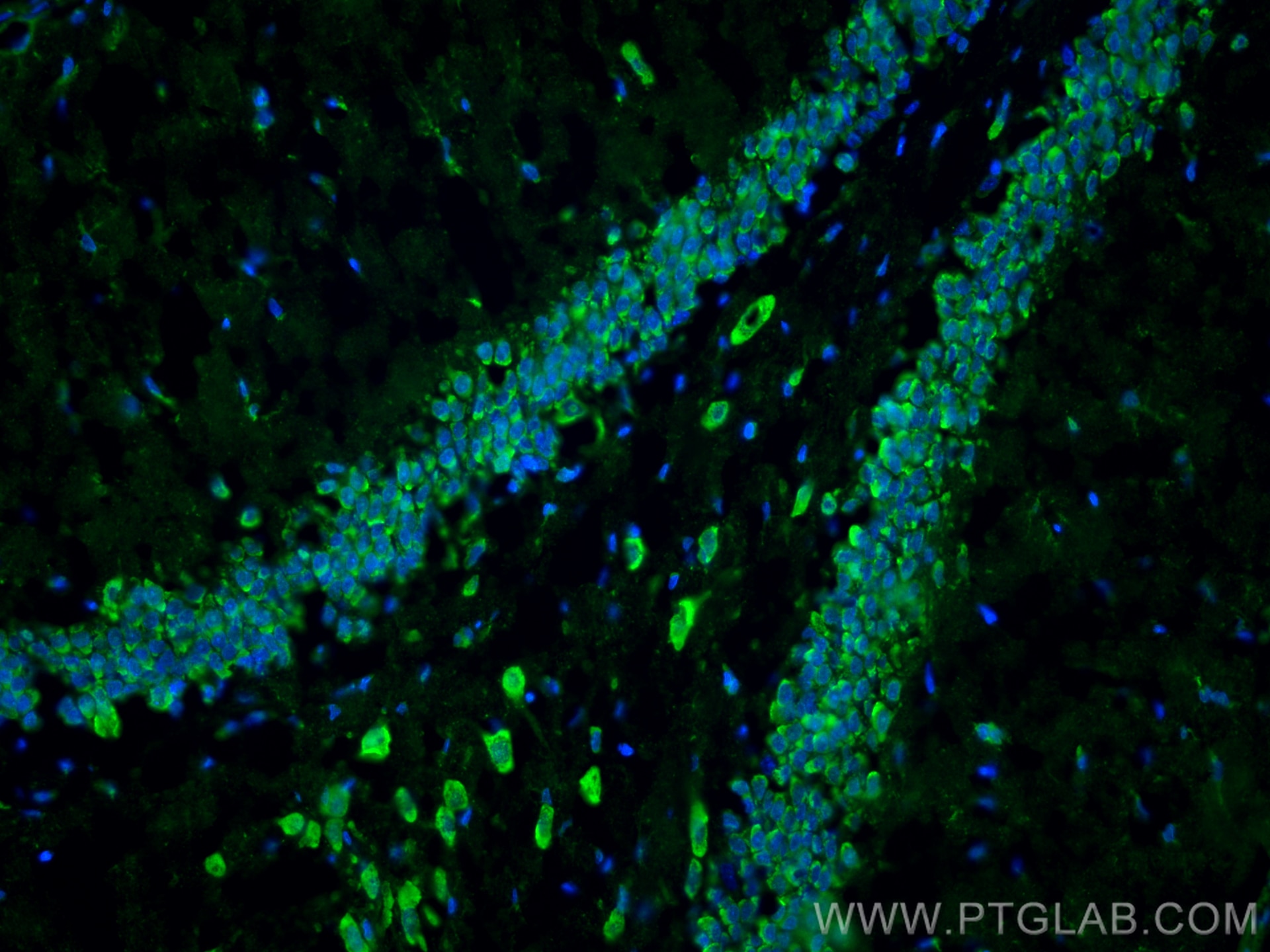Tested Applications
| Positive WB detected in | HeLa cells, mouse lung tissue, HepG2 cells, L02 cells, PC-3 cells, mouse liver tissue, rat liver tissue |
| Positive IP detected in | HeLa cells |
| Positive IHC detected in | human gliomas tissue, human breast cancer tissue, human liver tissue, mouse liver tissue Note: suggested antigen retrieval with TE buffer pH 9.0; (*) Alternatively, antigen retrieval may be performed with citrate buffer pH 6.0 |
| Positive IF-P detected in | mouse brain tissue |
| Positive IF-Fro detected in | mouse brain tissue, rat brain tissue |
Recommended dilution
| Application | Dilution |
|---|---|
| Western Blot (WB) | WB : 1:5000-1:50000 |
| Immunoprecipitation (IP) | IP : 0.5-4.0 ug for 1.0-3.0 mg of total protein lysate |
| Immunohistochemistry (IHC) | IHC : 1:50-1:500 |
| Immunofluorescence (IF)-P | IF-P : 1:50-1:500 |
| Immunofluorescence (IF)-FRO | IF-FRO : 1:50-1:500 |
| It is recommended that this reagent should be titrated in each testing system to obtain optimal results. | |
| Sample-dependent, Check data in validation data gallery. | |
Published Applications
| KD/KO | See 7 publications below |
| WB | See 50 publications below |
| IHC | See 4 publications below |
| IF | See 5 publications below |
| IP | See 2 publications below |
| CoIP | See 1 publications below |
Product Information
14299-1-AP targets GLUD1 in WB, IHC, IF-P, IF-Fro, IP, CoIP, ELISA applications and shows reactivity with human, mouse, rat samples.
| Tested Reactivity | human, mouse, rat |
| Cited Reactivity | human, mouse, rat, pig |
| Host / Isotype | Rabbit / IgG |
| Class | Polyclonal |
| Type | Antibody |
| Immunogen |
CatNo: Ag5694 Product name: Recombinant human GLUD1 protein Source: e coli.-derived, PGEX-4T Tag: GST Domain: 214-558 aa of BC040132 Sequence: FIGPGIDVPAPDMSTGEREMSWIADTYASTIGHYDINAHACVTGKPISQGGIHGRISATGRGVFHGIENFINEASYMSILGMTPGFGDKTFVVQGFGNVGLHSMRYLHRFGAKCIAVGESDGSIWNPDGIDPKELEDFKLQHGSILGFPKAKPYEGSILEADCDILIPAASEKQLTKSNAPRVKAKIIAEGANGPTTPEADKIFLERNIMVIPDLYLNAGGVTVSYFEWLKNLNHVSYGRLTFKYERDSNYHLLMSVQESLERKFGKHGGTIPIVPTAEFQDRISGASEKDIVHSGLAYTMERSARQIMRTAMKYNLGLDLRTAAYVNAIEKVFKVYNEAGVTFT Predict reactive species |
| Full Name | glutamate dehydrogenase 1 |
| Calculated Molecular Weight | 61 kDa |
| Observed Molecular Weight | 45-55 kDa |
| GenBank Accession Number | BC040132 |
| Gene Symbol | GLUD1 |
| Gene ID (NCBI) | 2746 |
| RRID | AB_2110515 |
| Conjugate | Unconjugated |
| Form | Liquid |
| Purification Method | Antigen affinity purification |
| UNIPROT ID | P00367 |
| Storage Buffer | PBS with 0.02% sodium azide and 50% glycerol, pH 7.3. |
| Storage Conditions | Store at -20°C. Stable for one year after shipment. Aliquoting is unnecessary for -20oC storage. 20ul sizes contain 0.1% BSA. |
Background Information
Human glutamate dehydrogenase (GDH), an enzyme central to the metabolism of glutamate, is known to exist in housekeeping and nerve tissue-specific isoforms encoded by the GLUD1 and GLUD2 genes, respectively. It catalyses the reversible inter-conversion of glutamate to alpha-ketoglutarate and ammonia, thus interconnecting amino acid and carbohydrate metabolism. GLUD1 might contribute to the formation of specific synapses in the hippocampus such as those formed by the projecting neurons of the entorhinal cortex(PMID: 22138648). GLUD1 has a calculated molecular mass of 61 kDa and an apparent molecular mass of 45-55 kDa with the 53aa transit peptide removed.
Protocols
| Product Specific Protocols | |
|---|---|
| IF protocol for GLUD1 antibody 14299-1-AP | Download protocol |
| IHC protocol for GLUD1 antibody 14299-1-AP | Download protocol |
| IP protocol for GLUD1 antibody 14299-1-AP | Download protocol |
| WB protocol for GLUD1 antibody 14299-1-AP | Download protocol |
| Standard Protocols | |
|---|---|
| Click here to view our Standard Protocols |
Publications
| Species | Application | Title |
|---|---|---|
Science Metabolic recycling of ammonia via glutamate dehydrogenase supports breast cancer biomass. | ||
Cell Metab High dietary fructose promotes hepatocellular carcinoma progression by enhancing O-GlcNAcylation via microbiota-derived acetate | ||
Cell Metab Acetate enables metabolic fitness and cognitive performance during sleep disruption | ||
Cell Mitochondrial Sirtuin Network Reveals Dynamic SIRT3-Dependent Deacetylation in Response to Membrane Depolarization. | ||
Nat Metab Quantitative analysis of metabolic fluxes in brown fat and skeletal muscle during thermogenesis |

